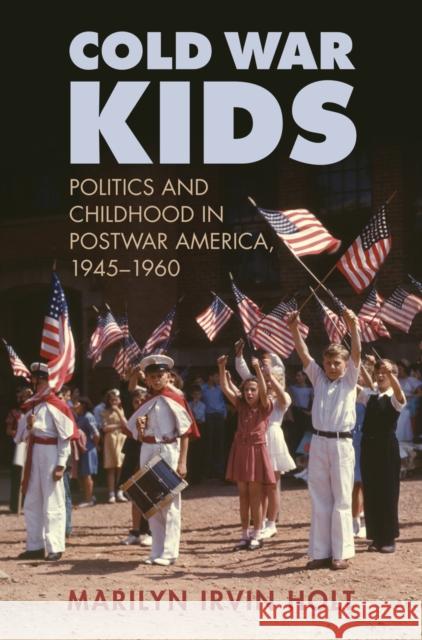Cold War Kids: Politics and Childhood in Postwar America, 1945-1960 » książka
topmenu
Cold War Kids: Politics and Childhood in Postwar America, 1945-1960
ISBN-13: 9780700619641 / Angielski / Twarda / 2014 / 224 str.
Today we take it for granted that political leaders and presidential administrations will address issues related to children and teenagers. But in the not-so-distant past, politicians had little to say, and federal programs less to do with children--except those of very specific populations. This book shows how the Cold War changed all that. Against the backdrop of the postwar baby boom, and the rise of a distinct teen culture, Cold War Kids unfolds the little-known story of how politics and federal policy expanded their influence in shaping children's lives and experiences--making way for the youth-attuned political culture that we've come to expect.
In the first part of the twentieth century, narrow and incremental policies focused on children were the norm. And then, in the postwar years, monumental events such as the introduction of the Salk vaccine or the Soviet launch of Sputnik delivered jolts to the body politic, producing a federal response that included all children. Cold War Kids charts the changes that followed, making the mid-twentieth century a turning point in federal action directly affecting children and teenagers. With the 1950 and 1960 White House Conferences on Children and Youth as a framework, Marilyn Irvin Holt examines childhood policy and children's experience in relation to population shifts, suburbia, divorce and family stability, working mothers, and the influence of television. Here we see how the government, driven by a Cold War mentality, was becoming ever more involved in aspects of health, education, and welfare even as the baby boom shaped American thought, promoting societal acceptance of the argument that all children, not just the poorest and neediest, merited their government's attention. This period, largely viewed as a time of "stagnation" in studies of children and childhood after World War II, emerges in Holt's cogent account as a distinct period in the history of children in America.










